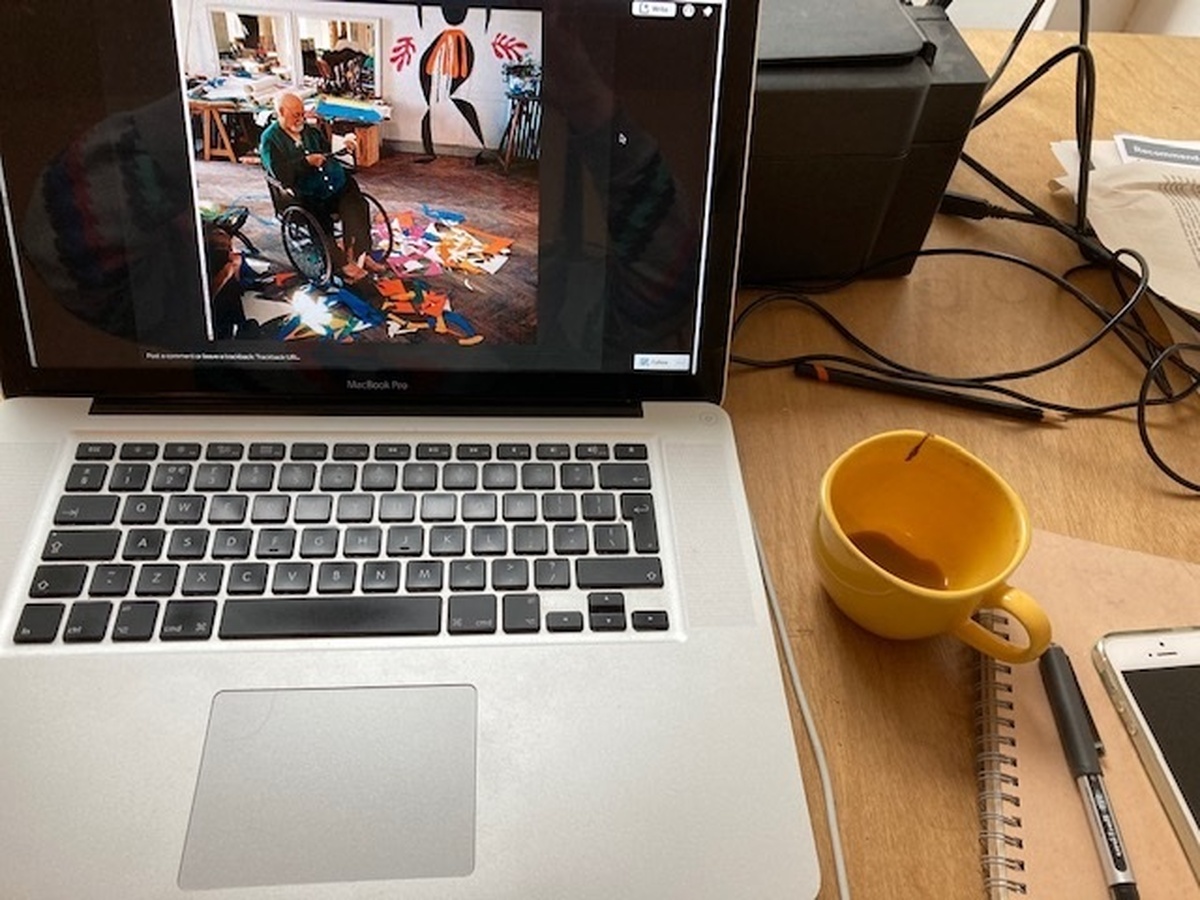Dialogue and the Imagination - Creative Responses to Coronavirus Pandemic
06/04/2020
| Arts & HealthDialogue and the Imagination - Creative Responses to Coronavirus Pandemic
In March 2020, like so many others, we had to stop face-to-face creative support of the people we had been regularly working with. Working in a hospice with people who have a life-limiting illness, each individual falls under the government’s definition of being at high risk from the virus and its effects and all were advised to “shield”. We began telephone and online creative support immediately.
The impact of living with a life limiting illness and deteriorating health mean many people are already isolated from peers and society more generally. The effects of a lockdown would only exacerbate a sense of isolation and loneliness. Liaising closely with the hospice clinical team, the art staff immediately began telephone and online creative support while working from home.
Creative support took many forms: sharing and reading poetry over the telephone, suggesting simple drawing exercises (continuous line, blind drawing, for example); posting out copies of subject matter to draw from, offering encouragement to contemplate, draw, photograph and write about the view from their window, suggesting how skills developed in the art room painting by mouth using acrylic inks (opacity, layering, brush pressure) could be translated to working digitally using EyeGaze painting software. And for those people who had internet access, offering feedback and encouragement on drawings and paintings completed at home shared via email, sharing links to virtual gallery tours and some of the other fantastic online resources. Our focus was to listen and to respond, offering dialogue that was meaningful, positive and directed by the person we were there to support.
We know how important our environment is for supporting or undermining our autonomy. This becomes acutely more apparent as we adapt practice to working remotely from home and adapting domestic spaces to support responsive creative practices that offer choice and control to the participant.
In these initial telephone encounters we drew on the internal spaces of the imagination as a route to authorship and of carving out a creative space. Creativity and imagination offer a bridge between the internal and external spaces we live with.
We find a similar approach useful when working with someone who is nearing the end stages of life, when they are too physically and mentally fatigued to physically engage in creating a piece of work. In this situation dialogue can become the creative stimulus for the imagination. The quality and kind of dialogue we have with a person can open up different ways of looking at things, it can reignite the imagination or ways of looking that have become lost due to illness, disability and the anxiety and social isolation this brings. In situations of compromised circumstances and loss of autonomy, this imaginative attention can offer opportunities of creative potential, authorship and possibility that can by-pass oppressive constraints, even if only for a short while. It still matters.
Before now perhaps we have taken imagination for granted, but as we have sought to support people creatively over the telephone and when people don’t have access to the internet, dialogue has been our route to opening up the imagination from a far. Of course this relies on spoken communication and excludes those who are not able to communicate verbally. We are also missing all the communication that is happening non-verbally or out of view / off camera, an important additional consideration of environmental factors that influence what takes place when working online.
Over a period of three weeks we were able to develop individual creative support for many of our caseload and for those with internet access we were looking to develop this further using online video tools such as Zoom. One of our next steps would have been to offer tailored video sessions and demonstrations based on intuitive and experimental mark-making. Creative support would have been developed in participation and dialogue with those individuals.
Unfortunately the hospice had to make the difficult decision of furloughing the art team alongside 60% of non-clinical staff. This has been very frustrating on our part as arts and health practitioners. But, we will be back at work soon and we are confident we will be able to pick up what we started with those we can, build trust and new relationships with new participants, and continue to develop approaches that support autonomy and enrich our imaginations.
